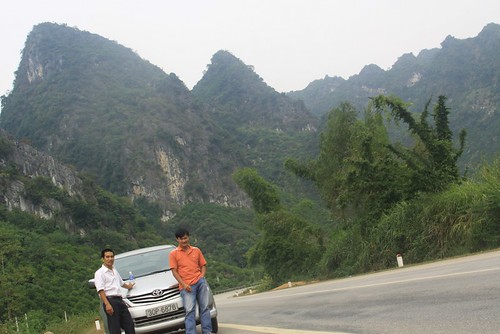what is the rainforest used for? why is the rainforest under threat?

Image by antonemus
Bergaya dalam perjalanan balik dari Lang Son ke Hanoi. Pemandangannya keren.
Question by black_starred_sky: what is the rainforest used for? why is the rainforest under threat?
how has the rainforest managed to be sustainable?
Give your answer to this question below!

Here are a few reasons for clear cutting and deforestation of the rainforests of central/south America:
Cattle ranching
Many rainforests in Central and South America have been burnt down to make way for cattle farming, which supplies cheap beef to North America, China and Russia. It is estimated that for each pound of beef produced, 200 square feet of rain forest is destroyed. In the past 20 years Costa Rica has lost the majority of its forests to beef cattle ranching. This is known as slash and burn farming and is believed to account for 50% of rain forest destruction. However, the land cannot be used for long: the soil is of poor quality and, without the forest, quickly becomes very dry. The grass often dies after only a few years and the land becomes a crusty desert. The cattle farmers then have to move on and destroy more rain forest to create new cattle pastures.
Indigenous Indians also use “slash and burn” farming techniques, but on a small scale. For centuries they have used a sustainable system where, when they finish using one small patch of land, they move away to a different area and allow the forest to regenerate. Since the area cleared is small, the soil does not dry out and therefore the forest clearance is localized and temporary rather than extensive and permanent.
Logging
This is believed to be the second largest cause of deforestation. Timber companies cut down huge trees such as mahogany and teak and sell them to other countries to make furniture. Smaller trees are often used for the production of charcoal. Vast areas of rain forest are cut in one go (clear felling) and the most valuable trees are selected for timber, leaving the others for wood chipping. The roads that are created in order to cut and remove the timber often lead to further damage: see the effect of forest roads under “Oil Companies”.
Agriculture
Much of the fruit, cereals and pulses we buy from tropical countries have been grown in areas where tropical rainforests once thrived. The forests are cut down to make way for vast plantations where products such as bananas, palm oil, pineapple, sugar cane, tea and coffee are grown. As with cattle ranching, the soil will not sustain crops for long, and after a few years the farmers have to cut down more rain forest for new plantations.
Mining
The developed nations relentlessly demand minerals and metals such as diamonds, oil, aluminium, copper and gold, which are often found in the ground below rainforests. The rainforests therefore have to be removed in order to extract them. Poisonous chemicals are sometimes used to separate the waste from the minerals, for example mercury, which is used to separate gold from the soil and debris with which it is mixed. These chemicals often find their way into rivers, polluting water supplies which local people depend on, killing fish and other animals that feed on them.
Oil Companies
Rainforests are seriously affected by oil companies searching for new oil deposits. This is incredibly damaging as often large roads are built through untouched forests in order to build pipelines and extract the oil. This encourages settlers to move into hitherto pristine forests and start slash-and-burn farming or cutting more timber for sale or the production of charcoal.
Once established, the oil pipelines which transport the oil often rupture, spouting gallons of oil into the surrounding forest, killing wildlife and contaminating the water supplies of local villages.
Dams
The World Bank and large companies invest money in developing countries to build dams for the generation of electricity. This can involve flooding vast areas of rain forest. Dams built in rain forest areas often have a short life because the submerged forest gradually rots, making the reservoir water acidic, which eventually corrodes the dam turbines. The dams can also become blocked with soil washed down from deforested highlands in heavy rains. This can cause great problems, such as flooding.
Sustainable Management
Sustainable rain forest management is based on the principles of sustainable forestry, a practice where trees are harvested in a manner that minimizes damage to the surrounding ecosystem. Trees are selectively cut, rather than clear cut, and often felled close to the end of their natural life cycle. Sustainable rain forest management seeks to capitalize on the economic value of rainforests without depleting its natural resources. Reforestation combined with selective extraction can ensure that forest cover remains more or less the same.
Bobby T.
October 19, 2013 at 1:28 am